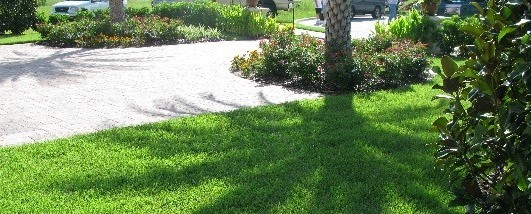Prepare Your Lawn For Drought
Although droughts are often thought of in terms of months or years, south Florida can experience drought conditions after only a few days without rainfall due to our sandy soil. The impact of drought conditions on lawns can be made more severe if water restrictions are implemented. But you can prepare your lawn for the dry season which is approximately October through May. Irrigation practices, mowing methods, fertilizer application, and pest control are the keys to preparing your lawn for drought.
Spots in the lawn that turn a brown/gray color, footprints that remain in the grass long after being made, and many leaf blades folded in half lengthwise, are some indications that the lawn needs water. Apply only enough water to wet the soil. One inch of water is enough for most Florida sandy soils. The next irrigation should be withheld until signs of wilt occur again. It may take up to six weeks to condition a lawn to survive several days or more without wilting between irrigation or rainfall. During this time the root system is developing and growing deeper into the soil.
Every time a lawn is mowed, there is stress on the grass metabolism which reduces root growth. Mowing frequency and the height of cut need to be carefully considered. Use the highest setting on the mower for drought conditioning. Never mow more than one-third the height of the lawn at any one time. Keep the mower blades sharp and properly balanced. A leaf blade cut by a sharp blade will heal over more quickly, losing less water, than a leaf blade shredded by dull mower blades.
All the drought conditioning accomplished by proper irrigation and mowing practices can be undone by excessive nitrogen fertilization. Shoot growth is enhanced, and root growth is reduced by excessive nitrogen. Conversely, Potassium fertilization can help lawns increase their tolerance to stress because it promotes increased root growth and thicker cell walls which improves drought tolerance.
Pest control on lawns should be done with a great deal of care because pesticides can add extra stress through phytotoxicity. Once a pest problem has been diagnosed, spot treatment is usually as effective as treating the whole lawn.
A drought prepared lawn can withstand more stress and will encourage the growth of a deep and extensive root system toughened through proper management practices.




